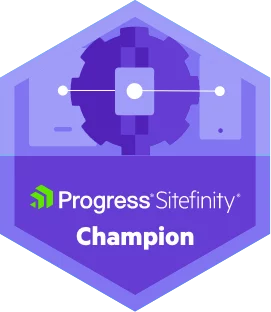As you know Sitecore 9 does not provide “Update Contact details” out of box but Sitecore is providing code for that which you can find from Sitecore docs.
In my current project, I am using Sitecore 9.0.2 and using the same code which Sitecore is providing for Update Contact. Recently I faced an issue where the form is getting spammed.
After some investigation, I found IsRobot function which is a helper method of Sitecore.Analytics.Pipelines.ClassificationStrategy.ContactClassification class. This helper methods take the contact classification as a parameter and return a Boolean value which indicates whether the contact is a robot or not.
public static bool IsRobot(int classification);
Below is a code of UpdateContact:
namespace Sitecore.ExperienceForms.Samples.SubmitActions
{
/// <summary>
/// Submit action for updating <see cref="PersonalInformation"/> and <see cref="EmailAddressList"/> facets of a <see cref="XConnect.Contact"/>.
/// </summary>
/// <seealso cref="Sitecore.ExperienceForms.Processing.Actions.SubmitActionBase{UpdateContactData}" />
public class UpdateContact : SubmitActionBase<UpdateContactData>
{
/// <summary>
/// Initializes a new instance of the <see cref="UpdateContact"/> class.
/// </summary>
/// <param name="submitActionData">The submit action data.</param>
public UpdateContact(ISubmitActionData submitActionData) : base(submitActionData)
{
}
/// <summary>
/// Gets the current tracker.
/// </summary>
protected virtual ITracker CurrentTracker => Tracker.Current;
/// <summary>
/// Executes the action with the specified <paramref name="data" />.
/// </summary>
/// <param name="data">The data.</param>
/// <param name="formSubmitContext">The form submit context.</param>
/// <returns><c>true</c> if the action is executed correctly; otherwise <c>false</c></returns>
protected override bool Execute(UpdateContactData data, FormSubmitContext formSubmitContext)
{
if (CurrentTracker == null && Tracker.Enabled)
{
Tracker.StartTracking();
}
if (Tracker.Current?.Session?.Contact?.System != null)
{
if (Analytics.Core.ContactClassification.IsRobot(Tracker.Current.Session.Contact.System.Classification) && Analytics.Configuration.AnalyticsSettings.Robots.IgnoreRobots)
{
var manager = Sitecore.Configuration.Factory.CreateObject("tracking/contactManager", true) as Analytics.Tracking.ContactManager;
manager.SaveContactToCollectionDb(Tracker.Current.Session.Contact);
manager.RemoveFromSession(Tracker.Current.Session.Contact.ContactId);
return false;
}
}
var firstNameField = GetFieldById(data.FirstNameFieldId, formSubmitContext.Fields);
var lastNameField = GetFieldById(data.LastNameFieldId, formSubmitContext.Fields);
var emailField = GetFieldById(data.EmailFieldId, formSubmitContext.Fields);
if (firstNameField == null && lastNameField == null && emailField == null)
{
return false;
}
using (var client = CreateClient())
{
try
{
var source = "Subcribe.Form";
var id = CurrentTracker.Contact.ContactId.ToString("N");
CurrentTracker.Session.IdentifyAs(source, id);
var trackerIdentifier = new IdentifiedContactReference(source, id);
var expandOptions = new ContactExpandOptions(
CollectionModel.FacetKeys.PersonalInformation,
CollectionModel.FacetKeys.EmailAddressList);
Contact contact = client.Get(trackerIdentifier, expandOptions);
SetPersonalInformation(GetValue(firstNameField), GetValue(lastNameField), contact, client);
SetEmail(GetValue(emailField), contact, client);
client.Submit();
return true;
}
catch (Exception ex)
{
Logger.LogError(ex.Message, ex);
return false;
}
}
}
/// <summary>
/// Creates the client.
/// </summary>
/// <returns>The <see cref="IXdbContext"/> instance.</returns>
protected virtual IXdbContext CreateClient()
{
return SitecoreXConnectClientConfiguration.GetClient();
}
/// <summary>
/// Gets the field by <paramref name="id" />.
/// </summary>
/// <param name="id">The identifier.</param>
/// <param name="fields">The fields.</param>
/// <returns>The field with the specified <paramref name="id" />.</returns>
private static IViewModel GetFieldById(Guid id, IList<IViewModel> fields)
{
return fields.FirstOrDefault(f => Guid.Parse(f.ItemId) == id);
}
/// <summary>
/// Gets the <paramref name="field" /> value.
/// </summary>
/// <param name="field">The field.</param>
/// <returns>The field value.</returns>
private static string GetValue(object field)
{
return field?.GetType().GetProperty("Value")?.GetValue(field, null)?.ToString() ?? string.Empty;
}
/// <summary>
/// Sets the <see cref="PersonalInformation"/> facet of the specified <paramref name="contact" />.
/// </summary>
/// <param name="firstName">The first name.</param>
/// <param name="lastName">The last name.</param>
/// <param name="contact">The contact.</param>
/// <param name="client">The client.</param>
private static void SetPersonalInformation(string firstName, string lastName, Contact contact, IXdbContext client)
{
if (string.IsNullOrEmpty(firstName) && string.IsNullOrEmpty(lastName))
{
return;
}
PersonalInformation personalInfoFacet = contact.Personal() ?? new PersonalInformation();
if (personalInfoFacet.FirstName == firstName && personalInfoFacet.LastName == lastName)
{
return;
}
personalInfoFacet.FirstName = firstName;
personalInfoFacet.LastName = lastName;
client.SetPersonal(contact, personalInfoFacet);
}
/// <summary>
/// Sets the <see cref="EmailAddressList"/> facet of the specified <paramref name="contact" />.
/// </summary>
/// <param name="email">The email address.</param>
/// <param name="contact">The contact.</param>
/// <param name="client">The client.</param>
private static void SetEmail(string email, Contact contact, IXdbContext client)
{
if (string.IsNullOrEmpty(email))
{
return;
}
EmailAddressList emailFacet = contact.Emails();
if (emailFacet == null)
{
emailFacet = new EmailAddressList(new EmailAddress(email, false), "Preferred");
}
else
{
if (emailFacet.PreferredEmail?.SmtpAddress == email)
{
return;
}
emailFacet.PreferredEmail = new EmailAddress(email, false);
}
client.SetEmails(contact, emailFacet);
}
}
} This article originally appeared on SWATI GUPTA (SITECORE MVP) | BLOGS
(https://swatiguptablogs.blogspot.com/).





